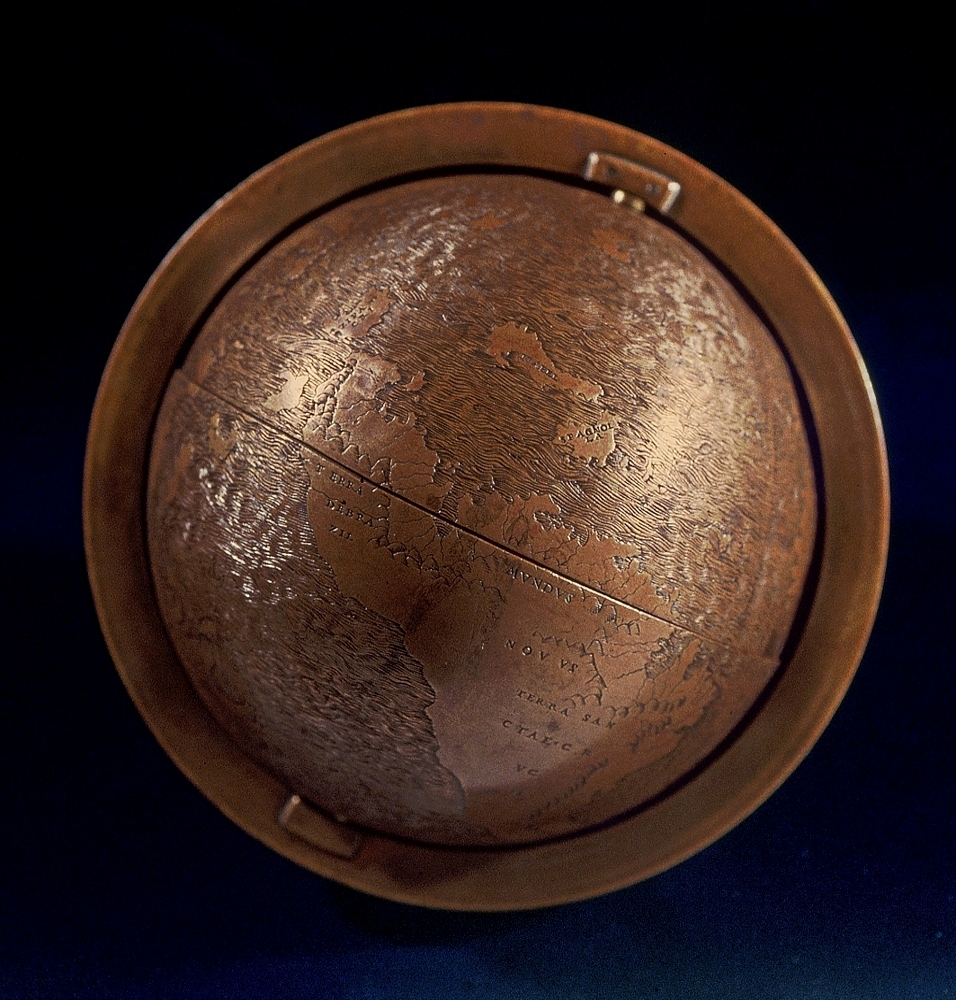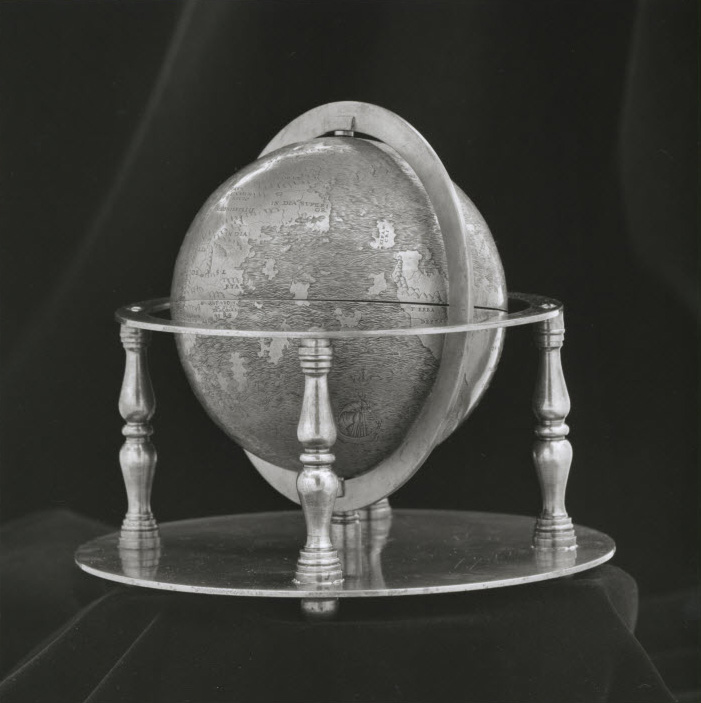The following article with the title above was written by Sarah Pruitt for history.com and was posted August 21, 2013:
The intriguing Latin phrase Hic Sunt Dracones–translated as “Here be dragons”–appears on the globe above the coast of Southeast Asia, while the continent of North America is shown only as a few scattered islands. Experts say the recently discovered globe, engraved on two conjoined ostrich-shell halves, may be the oldest ever identified that depicts the New World. Purchased anonymously at the 2012 London Map Fair, the globe made its way into the hands of collector Stefaan Missine, who published the results of a yearlong analysis in this week’s edition of Portolan, the journal of the Washington Map Society.
Prior to its purchase at the London Map Fair last year, the ostrich-egg globe had apparently been part of an important European collection for decades, according to the dealer who sold it. Before that, Missine believes it was passed through many families, and was possibly sold during economic crises following World War II.
After obtaining access to the globe, which is around the size of a grapefruit, Missine consulted more than 100 scholars and experts, to obtain a comprehensive analysis of its origins. A radiologist helped him determine its age by comparing the density of the shells to newer ostrich eggshells, concluding that the older, much smaller shell had lost around 50 percent of its calcium bone density in the aging process. Through this analysis, Missine dated the globe to 1504, making it the oldest yet identified to depict the New World.
The globe’s material makes it a rarity regardless of its age. More commonly, old maps were drawn on materials such as vellum (calfskin parchment), sealskin or wood; other materials were used, but so far globes engraved on ostrich eggs are relatively unknown. Thomas Sander, editor of the Portolan, points out that the egg might have been made for an Italian noble family around the time of famed artist Leonardo da Vinci, when the nobility often kept ostriches in their back gardens as one more sign of their wealth. Though the maker of the globe remains unknown. Missine speculates that the eggshell globe could even be connected to da Vinci’s workshop, given that an etching of an Indian Ocean ship on the globe is similar to one done by an artist associated with Leonardo.
Previously, the oldest known globe to depict the New World was the Hunt-Lenox Globe, dated to around 1510 and housed in the Rare Book Division of the New York Public Library. Made of copper, the Hunt-Lenox Globe shows striking similarities to the ostrich-egg globe, including the lines and contours of territories, its depiction of oceans and its script (it also includes the Hic Sunt Dracones phrase). On the other hand, the Hunt-Lenox is perfectly spherical, while the ostrich egg’s shape is slightly irregular, and the markings along its equator line are noticeably muddled. Missine hypothesizes that the two sides of the eggshell globe were cast separately, then joined together with a glue that obscured the markings near the equator. He has also concluded that the Hunt-Lennox Globe was made from a cast of the ostrich-egg globe, which would explain the similarities between the two.
Missine, a real estate project developer, bought his first antique map (an 18th-century copper engraving that depicts northern Germany) 20 years ago, and grew passionate about discovering the origins of such rare objects. Sander calls Missine’s analysis of the globe “an incredible detective story,” while other scholars are intrigued but continue to have questions. Some cartographers point out that even if the eggshell dated to the 1500s, the engravings on it could be much more recent.
John W. Hessler of the Library of Congress dismisses the validity of the da Vinci connection, and points out that a number of sources have claimed that Missine himself is the globe’s anonymous owner, posing a possible conflict of interest in his research. While Missine has declined to comment on whether he owns the globe, his supporters at the Washington Map Society say the issue of ownership is irrelevant, as long as the investigative work into the globe’s origins is sound.
Editor’s note: Many thanks to grad student Tim Niblett for bringing this material to our attention.






